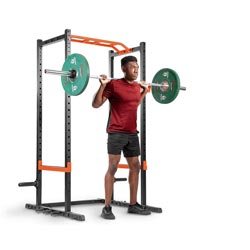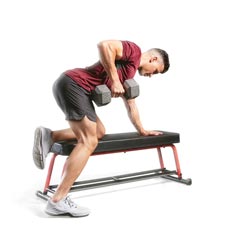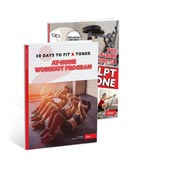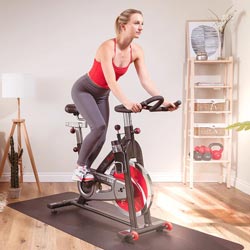Being the new kid in the weight room can be intimidating at best. At worst, it feels like all eyes are on you (I promise, they’re not).
We were all beginners once. Most of us will tell you the best way to gain confidence is to just dive in. The more you work out, the more comfortable you get.
But there are a few common mistakes to avoid that will make your fitness journey a bit more enjoyable along the way.
Here are the five weight room mistakes beginners make time and time again. Avoid them to build confidence and muscle.
1. Lifting With Bad Form
Poor form is an injury waiting to happen. Paying attention to exercise form keeps you safe, prevents injury, and helps prevent muscle imbalances. Plus, by prioritizing form up front, you’ll have better stability and mobility to do the fancier stuff later.
To start, focus on lifting less weight with proper technique to help you nail the correct movement patterns before adding load.
One of the most common things to look out for is that you’re properly activating your core. Core activation is key for avoiding compensation in nearly every exercise. Getting it down means you’ll shift the work back to the muscles that are supposed to be doing the work (for more effective workouts).
2. Focusing On Only One Thing
If you have your sights set on a specific goal, don’t get tunnel vision.
For example, if you want to build a bigger, stronger butt, it’s not uncommon to be hyper-focused on your goal, ignoring other muscle groups in the process. In fact, you might ignore your quads and hamstrings, attempting to only work your glutes.
This isn’t only impossible (basically all glute exercises require quad and hamstring engagement to some degree), but it’s also unwise for glute gains. Your hamstrings and quads play an essential role in developing your glutes because their weakness could hold you back during more glute-focused lifts.
Regardless of your goal, you will experience faster, higher-quality results if you even out your workouts. Plus, by giving all your muscles the attention they deserve you’ll be training your body to move better.
3. Not Having a Plan
When first hitting the weight room, it’s normal to get inspiration from others. But constantly turning to influencer workouts for your regular fitness programming is like throwing darts at a dartboard blindfolded.
Those workouts might be challenging, but if they’re not a part of a structured program they likely won’t rack up any major gains.
A solid strength training program should look similar from week to week. What should change is progressive overload—the concept that as your body gets stronger, you make your workouts progressively harder.
When progressive overload is properly applied, you’ll gently push your body to get stronger by slowly adding weight (or reps, sets, time, intensity, or exercise difficulty) over time. By gradually upping the ante, you reduce your risk of injury and maximize potential gains.
4. Only Using Weight Machines
Weight machines are great. They even usually have a diagram of how to use them, which can take all the anxiety out of lifting weights. However, they’re often isolated movements meaning they work only one muscle group at once.
On the other hand, free weights—like dumbbells and barbells—work more muscle groups to help build muscle more efficiently than working with machines. Plus, free weights challenge your stability and mobility since they force you to move as you move during everyday activities.
If you’ve made the machines your comfort zone, it’s time to branch out. Download the SunnyFit app, and get started with tons of free dumbbell and kettlebell workouts, or try this 25-Minute Full Body Beginner Barbell Workout next time you’re in the gym.
5. Ignoring What You Do Outside of the Gym
When you lift weights, small micro-tears occur in the muscle. When repaired, these tears enable your muscle to grow stronger and lift heavier weights in the future. But when proper recovery is put on the back burner, you run the risk of overtraining.
When overtrained, your muscles, workouts, and energy suffer. You might feel like you’re putting more effort into your workouts but seeing fewer results.
The solution? Prioritize proper recovery. Sleep, hydration, nutrition, stretching, and foam rolling all play into how your muscles recover. Make sure you’re hitting your bases to perform your best and rack up the best results from your new routine.























